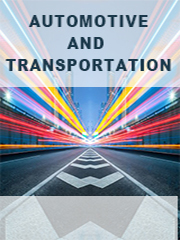Report overview
Automotive Stabilizer Bar is part of automotive suspensions which helps reduce the automotive body roll of a vehicle during fast cornering or over road irregularities. It connects opposite wheels together through short lever arms linked by a torsion spring.
Generally, one automotive installs one unit, which mainly locates in the front axis. In addition, some high-end cars may install two units.
This report aims to provide a comprehensive presentation of the global market for Automotive Stabilizer Bar, with both quantitative and qualitative analysis, to help readers develop business/growth strategies, assess the market competitive situation, analyze their position in the current marketplace, and make informed business decisions regarding Automotive Stabilizer Bar. This report contains market size and forecasts of Automotive Stabilizer Bar in global, including the following market information:
Global Automotive Stabilizer Bar Market Revenue, 2018-2023, 2024-2029, ($ millions)
Global Automotive Stabilizer Bar Market Sales, 2018-2023, 2024-2029, (K Units)
Global top five Automotive Stabilizer Bar companies in 2022 (%)
The global Automotive Stabilizer Bar market was valued at US$ 2426.3 million in 2022 and is projected to reach US$ 2825.7 million by 2029, at a CAGR of 2.2% during the forecast period. The influence of COVID-19 and the Russia-Ukraine War were considered while estimating market sizes.
Global Automotive Stabilizer Bar key players include ZF TRW, Chuo Spring, Sogefi, Mubea, AAM, etc. Global top five manufacturers hold a share over 45%.
Europe is the largest market, with a share over 25%, followed by China and North America, both have a share over 40%.
In terms of product, Hollow is the largest segment, with a share over 65%. And in terms of application, the largest application is Passenger Vehicle, followed by Commercial Vehicle, etc.
We surveyed the Automotive Stabilizer Bar manufacturers, suppliers, distributors and industry experts on this industry, involving the sales, revenue, demand, price change, product type, recent development and plan, industry trends, drivers, challenges, obstacles, and potential risks.
Total Market by Segment:
Global Automotive Stabilizer Bar Market, by Type, 2018-2023, 2024-2029 ($ Millions) & (K Units)
Global Automotive Stabilizer Bar Market Segment Percentages, by Type, 2022 (%)
Solid
Hollow
Global Automotive Stabilizer Bar Market, by Application, 2018-2023, 2024-2029 ($ Millions) & (K Units)
Global Automotive Stabilizer Bar Market Segment Percentages, by Application, 2022 (%)
Passenger Vehicle
Commercial Vehicle
Global Automotive Stabilizer Bar Market, By Region and Country, 2018-2023, 2024-2029 ($ Millions) & (K Units)
Global Automotive Stabilizer Bar Market Segment Percentages, By Region and Country, 2022 (%)
North America
US
Canada
Mexico
Europe
Germany
France
U.K.
Italy
Russia
Nordic Countries
Benelux
Rest of Europe
Asia
China
Japan
South Korea
Southeast Asia
India
Rest of Asia
South America
Brazil
Argentina
Rest of South America
Middle East & Africa
Turkey
Israel
Saudi Arabia
UAE
Rest of Middle East & Africa
Competitor Analysis
The report also provides analysis of leading market participants including:
Key companies Automotive Stabilizer Bar revenues in global market, 2018-2023 (Estimated), ($ millions)
Key companies Automotive Stabilizer Bar revenues share in global market, 2022 (%)
Key companies Automotive Stabilizer Bar sales in global market, 2018-2023 (Estimated), (K Units)
Key companies Automotive Stabilizer Bar sales share in global market, 2022 (%)
Further, the report presents profiles of competitors in the market, key players include:
ZF TRW
Chuo Spring
Sogefi
Huayu
Mubea
AAM
Thyssenkrupp
DAEWON
NHK International
Yangzhou Dongsheng
Wanxiang
Tata
Kongsberg Automotive
SAT
ADDCO
Tower
SwayTec
Tinsley Bridge
Fawer
Dongfeng
TMT?CSR?
Outline of Major Chapters:
Chapter 1: Introduces the definition of Automotive Stabilizer Bar, market overview.
Chapter 2: Global Automotive Stabilizer Bar market size in revenue and volume.
Chapter 3: Detailed analysis of Automotive Stabilizer Bar manufacturers competitive landscape, price, sales and revenue market share, latest development plan, merger, and acquisition information, etc.
Chapter 4: Provides the analysis of various market segments by type, covering the market size and development potential of each market segment, to help readers find the blue ocean market in different market segments.
Chapter 5: Provides the analysis of various market segments by application, covering the market size and development potential of each market segment, to help readers find the blue ocean market in different downstream markets.
Chapter 6: Sales of Automotive Stabilizer Bar in regional level and country level. It provides a quantitative analysis of the market size and development potential of each region and its main countries and introduces the market development, future development prospects, market space of each country in the world.
Chapter 7: Provides profiles of key players, introducing the basic situation of the main companies in the market in detail, including product sales, revenue, price, gross margin, product introduction, recent development, etc.
Chapter 8: Global Automotive Stabilizer Bar capacity by region & country.
Chapter 9: Introduces the market dynamics, latest developments of the market, the driving factors and restrictive factors of the market, the challenges and risks faced by manufacturers in the industry, and the analysis of relevant policies in the industry.
Chapter 10: Analysis of industrial chain, including the upstream and downstream of the industry.
Chapter 11: The main points and conclusions of the report.
